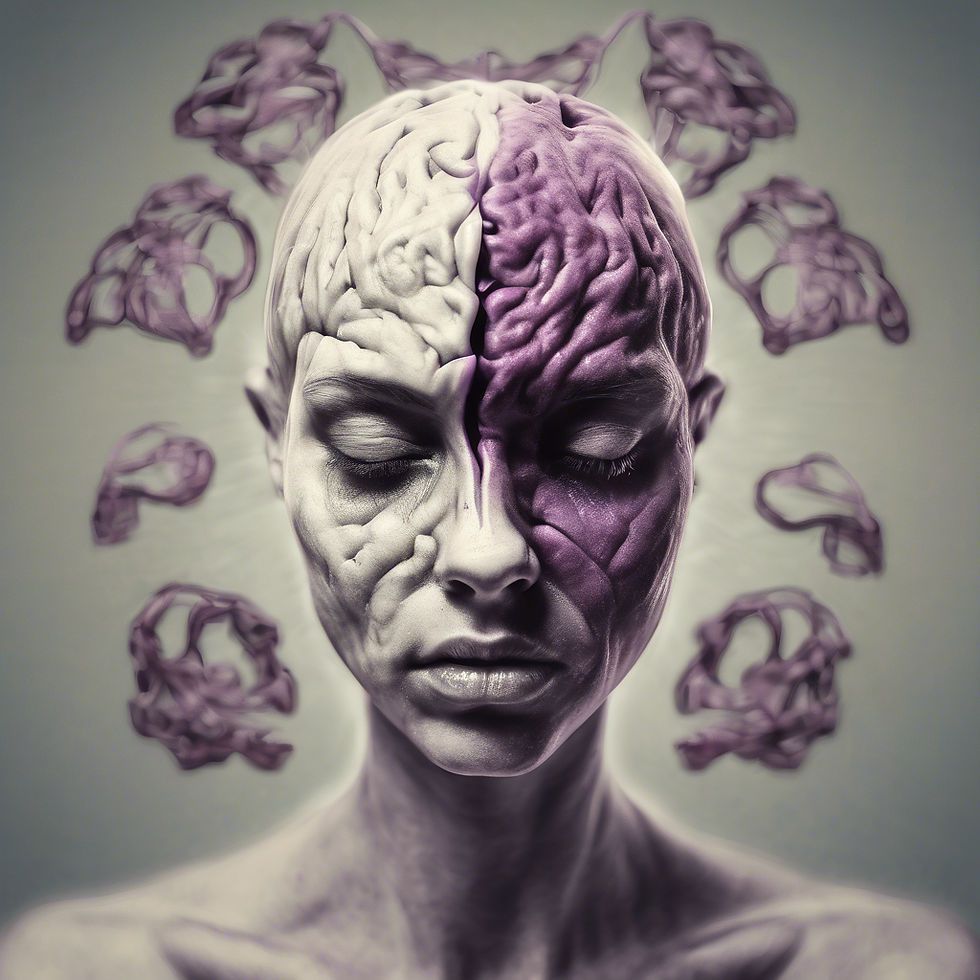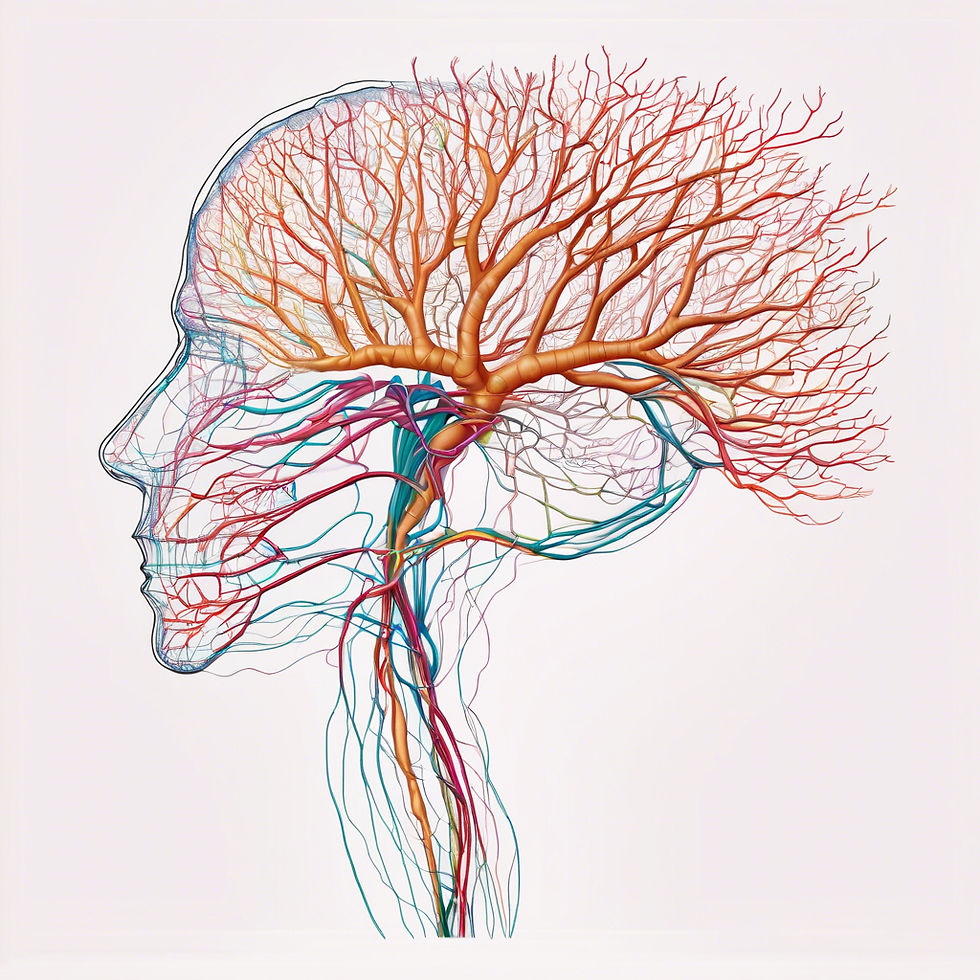Dementia and Chiari Malformations
- Sasha Tanoushka BCH IACT

- Feb 19
- 3 min read
Frontal Temporal Dementia (FTD) is a cruel and complex disease, one I’ve come to know all too well. My mother’s journey with dementia has been deeply personal, but through my work supporting hundreds of elderly community members since the pandemic, I’ve witnessed just how varied dementia can be. While Alzheimer’s is the most well-known, there are many forms—FTD, for example, affects personality and behavior first, whereas Vascular Dementia often results from strokes and impacts problem-solving and mobility. Lewy Body Dementia brings its own challenges, with hallucinations and motor symptoms resembling Parkinson’s. Each type manifests differently, yet at their core, they all rob individuals of their memories, independence, and sense of self. Working in management in senior care and also as a caregiver, I’ve seen firsthand the heartbreak, resilience, and small moments of joy that define life with dementia. Understanding these differences is crucial for those diagnosed and the families and caregivers walking this difficult path alongside them.
I was recently presented with a case of FTD and Chiari malformations, and so I thought to set pen to paper, or rather fingers to keyboard to type this. Frontal Temporal Dementia (FTD) and Chiari Malformations present unique neurological challenges, including cognitive decline, emotional dysregulation, and structural brain pressure. While no cure exists for FTD, Neurofeedback (especially with Vital Neuro) and Autohypnosis help manage symptoms, improve quality of life, and support brain resilience. As someone who has spent almost a decade in this area of work, and worked with many folk experiencing cognitive decline, I am continually grateful for the opportunity to bring the HypnoChic Program to the community.

Here’s how the integrated HypnoChic program can help:
The integrated Neuroguided Performance Training program using Vital Neuro uses real-time EEG feedback to train the brain into more optimal states. For someone with Frontal Temporal Dementia and Chiari Malformations, Neurofeedback can:
✅ Enhance Cognitive Function:
- Strengthens weakened neural pathways to improve focus, processing speed, and mental clarity.
- Supports frontal lobe function, which is often affected in FTD, potentially improving problem-solving and executive function.
✅ Reduce Emotional Dysregulation & Aggression:
- FTD can cause emotional instability, impulsivity, and social withdrawal.
- Neurofeedback stabilizes the brain’s regulation of emotions by balancing overactive or underactive brainwave activity.
✅ Improve Sleep & Brain Recovery:
- Vital Neuro helps the brain enter deeper, restorative sleep, critical for brain detoxification and slowing neurodegeneration.
- Sleep disturbances are common in both FTD and Chiari Malformations, and improving sleep can enhance overall neurological function.
✅ Regulate Autonomic Nervous System (ANS) Dysfunction:
- Chiari Malformations often disrupt the brainstem, affecting heart rate, digestion, and energy levels.
- Neurofeedback helps regulate the parasympathetic nervous system, reducing stress on the body.
✅ Support Neuroplasticity & Brain Adaptation:
- While FTD leads to neuron loss, Neurofeedback optimizes remaining brain function and promotes adaptive brain plasticity.
- Helps retrain the brain to use compensatory pathways for thinking, speaking, and movement.

2. How Autohypnosis Can Help
Autohypnosis is a powerful self-regulation tool that can enhance mental resilience, emotional balance, and pain management.
✅ Reduce Anxiety & Fear of Diagnosis:
- FTD and Chiari Malformations can cause distress, confusion, and emotional overwhelm.
- Hypnosis rewires the brain’s response to stress, helping create a calmer, more grounded mindset.
✅ Enhance Memory Recall & Focus:
- Autohypnosis can be tailored to strengthen memory retrieval, focus, and orientation—especially useful in early-stage dementia.
- Helps create mental anchors to maintain identity, personal history, and social connections.
✅ Pain & Pressure Management (for Chiari Malformations):
- Chiari Malformations can cause headaches, neck pain, and dizziness due to increased brainstem pressure.
- Hypnosis can modulate pain perception and reduce muscle tension, improving comfort.
✅ Increase Neuroplasticity Through Visualization:
- Guided hypnotic scripts can reinforce brain flexibility, encouraging new neural connections to compensate for lost function.
✅ Promote Relaxation & Nervous System Regulation:
- Supports parasympathetic activation, reducing neuroinflammation and improving brain health.
Potential Benefits Over Time
✔ Improved mood stability & emotional resilience
✔ Better sleep quality & reduced brain fog
✔ Enhanced cognitive clarity & slowed progression of FTD symptoms
✔ Reduction in stress-related worsening of symptoms
✔ Pain relief & better autonomic nervous system regulation (for Chiari Malformations)
For You or a Loved One….
While neither Neurofeedback nor Hypnosis can cure Frontal Temporal Dementia or Chiari Malformations, they can significantly enhance the quality of life by stabilizing brain function, supporting emotional regulation, and improving sleep, pain management, and mental clarity. Combining these therapies with medical care may offer a safe approach to managing symptoms and supporting neurological resilience.
Contact us to find out more if you or a loved one could benefit from this integrated program, and you would like to discover more…..




Comments